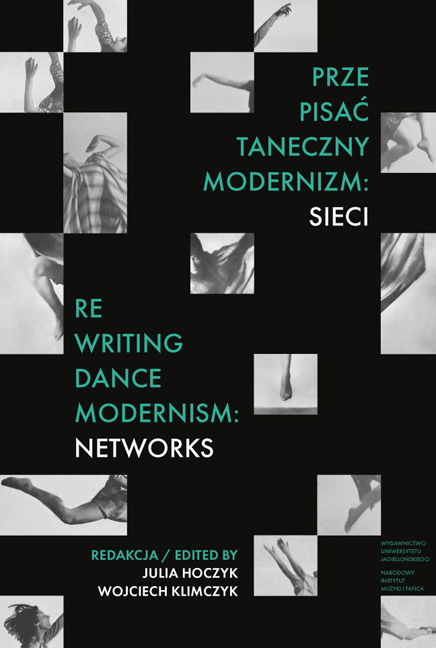Book contents
- Frontmatter
- Contents
- Prze-pisać taneczny modernizm: sieci
- Metodologie: usieciowianie tanecznego modernizmu
- Transmisje: transnarodowe trajektorie tanecznego modernizmu
- Poszerzenia: taneczny modernizm w słowiańskiej Europie Środkowej
- Methodologies: Networking Dance Modernism
- Transmissions: Transnational Trajectories of Dance Modernism
- Expansions: Dance Modernism in Slavic Central Europe
- Biogramy autorów
- Authors’ Biographies
- Indeks / Index
- Miscellaneous Endmatter
- Miscellaneous Endmatter
Ausdruckstanz Facing History and Memory: Reenacting the Past
Published online by Cambridge University Press: 01 March 2024
- Frontmatter
- Contents
- Prze-pisać taneczny modernizm: sieci
- Metodologie: usieciowianie tanecznego modernizmu
- Transmisje: transnarodowe trajektorie tanecznego modernizmu
- Poszerzenia: taneczny modernizm w słowiańskiej Europie Środkowej
- Methodologies: Networking Dance Modernism
- Transmissions: Transnational Trajectories of Dance Modernism
- Expansions: Dance Modernism in Slavic Central Europe
- Biogramy autorów
- Authors’ Biographies
- Indeks / Index
- Miscellaneous Endmatter
- Miscellaneous Endmatter
Summary
In my article “Ausdruckstanz: Traditions, Translations, Transmissions” on the historiography of German modern dance, I commented on three essays presented in a section of the volume Dance Discourses: Keywords in Dance Research, which deals with dance and politics and the controversial history of Ausdruckstanz, whose intricacies did not fully manifest themselves until the late 1990s. I focused on the relationship (often perceived as tension) between history and memory, and among the many questions I raised, two seem to me to be still stimulating: what is the relationship between schisms and continuities in historical and memorial narratives? Which is the road to take between truth in history, faithfulness of memory and the right of forgetting?
Thanks to the research carried out by Susan Manning, Marion Kant and Lilian Karina, Inge Baxmann, Laure Guilbert, who could work in archives inaccessible until then, and to the cultural framework offered by Inge Baxmann,
official historical narratives have been integrated with forgotten or neglected stories, and modern dance has been reinserted into cultural history. We were also confronted with the memories transmitted by Ausdruckstanz recognized protagonists, who continued to work and live in Germany after the rise of the Nazi Regime, and with those dancers who were forced into exile. The majority of them were Jewish, the others were dancers politically engaged in communist or socialist organizations. At that time, the history and memory of German modern dance seemed to have told different truths, often each one standing firm on the principle of non-negotiability, and their relationship has been loaded with emotionally charged binary oppositions such as bad vs. good, false vs. true, ideological vs. authentic, and so on. Altogether, these new narratives – which were based on historical documents, oral testimonies and incorporated techniques and repertoires – told a different version of events and biographies compared to what was assumed as true for decades by scholars, critics and artists. Re-reading the ambiguous shift from the experimental phase of the 1910s and 1920s to the rise of Nazism has shown how Ausdruckstanz was the result of a long process of cultural transformation and the forerunner of compelling modern utopias.
- Type
- Chapter
- Information
- Re-writing Dance Modernism: Networks , pp. 371 - 386Publisher: Jagiellonian University PressPrint publication year: 2023



